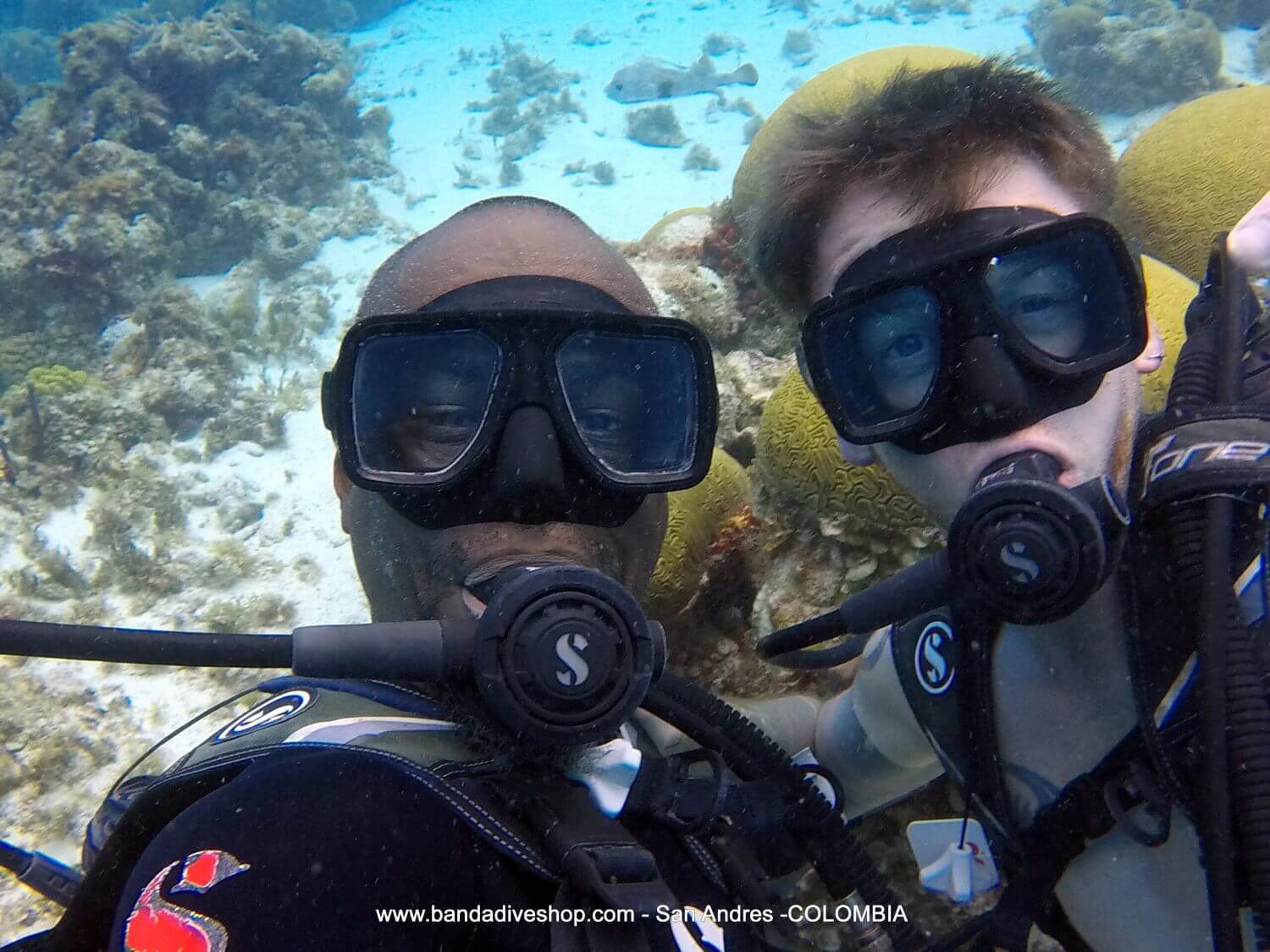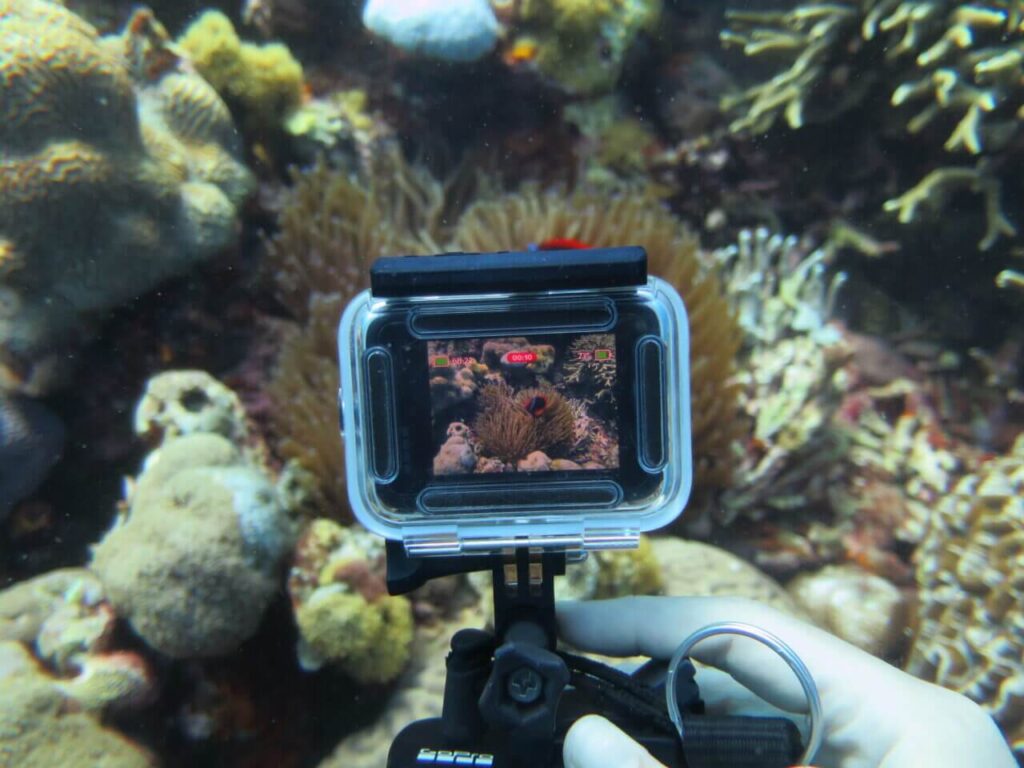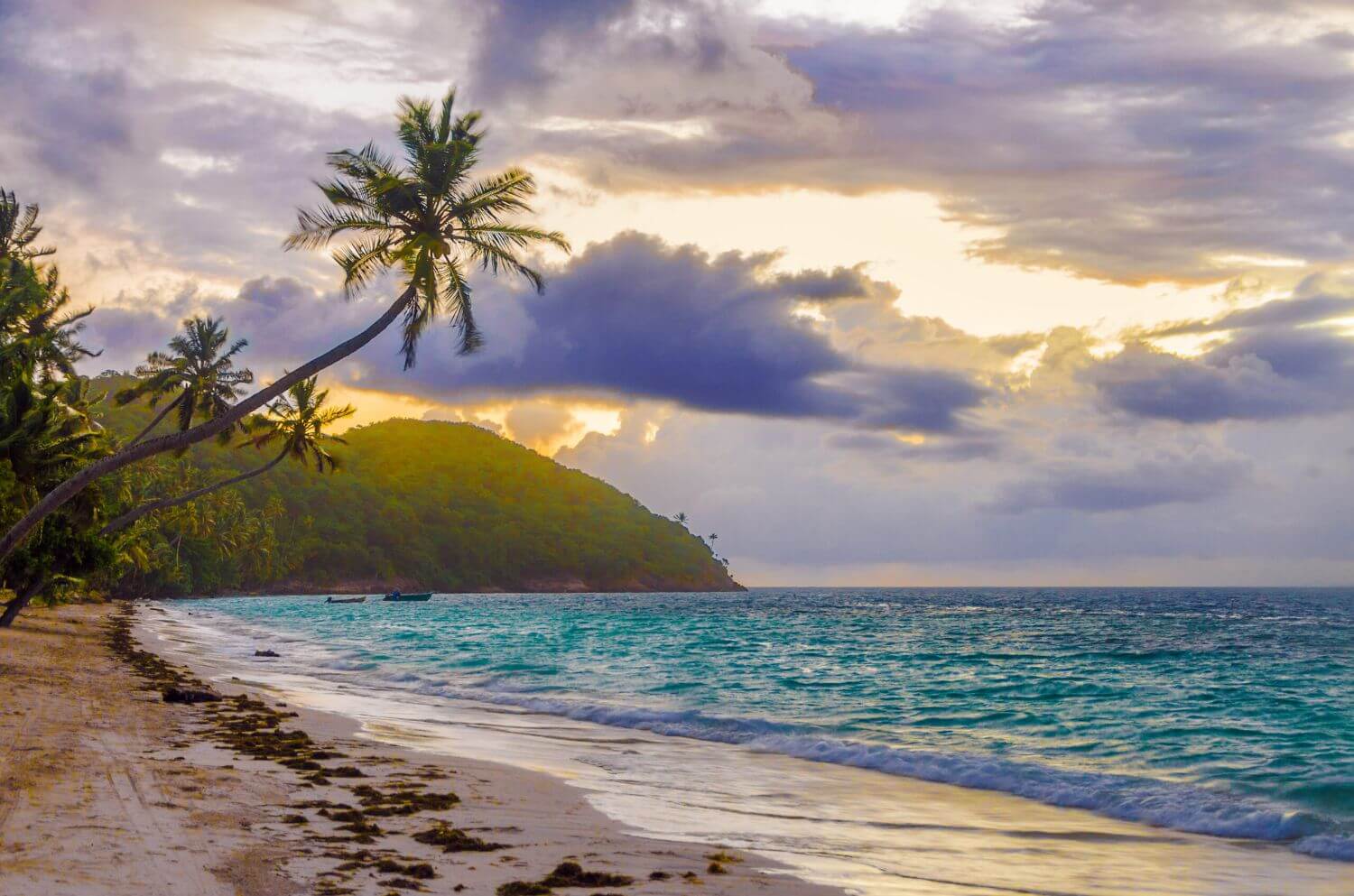
Nestled in the heart of the Caribbean, San Andres is a Colombian owned coral island with a total land area of just 26 km squared.
Together with the nearby islands Santa Catalina and Providencia, it forms a UNESCO Biosphere reserve: the “Seaflower Marine Protected Area”.
There’s a total of 30 dive sites around the island, that are generally quite shallow (around 36 feet deep), easy to reach and offer superb visibility.
Most dive sites are characterised by stunning coral reef formations, made up largely of soft coral but also with some intricate hard coral structures as well.
Reef fish are plentiful with many parrot fish, pufferfish, barracuda, wrasse and grouper among other species. It’s also quite easy to spot giant stingrays, flying fish, turtles and nurse sharks!
Scuba Diving San Andres: My Experience
Back in 2019, I visited San Andres for just under a week.
This was right at the start of Diving Squad’s journey, meaning I lacked the resources I do today, but thanks to the help of Banda Dive Shop, I was able to record the experience nonetheless as my dive guide was a dab hand with the GoPro!
Although I only had enough money and time to discover a few of the dive sites at San Andres, it was still some of the best scuba diving I had ever experienced!
The first thing I want to expand upon is how crystal clear the water was. Visibility was at around 90 ft, meaning it was extremely easy to see right off into the distance!
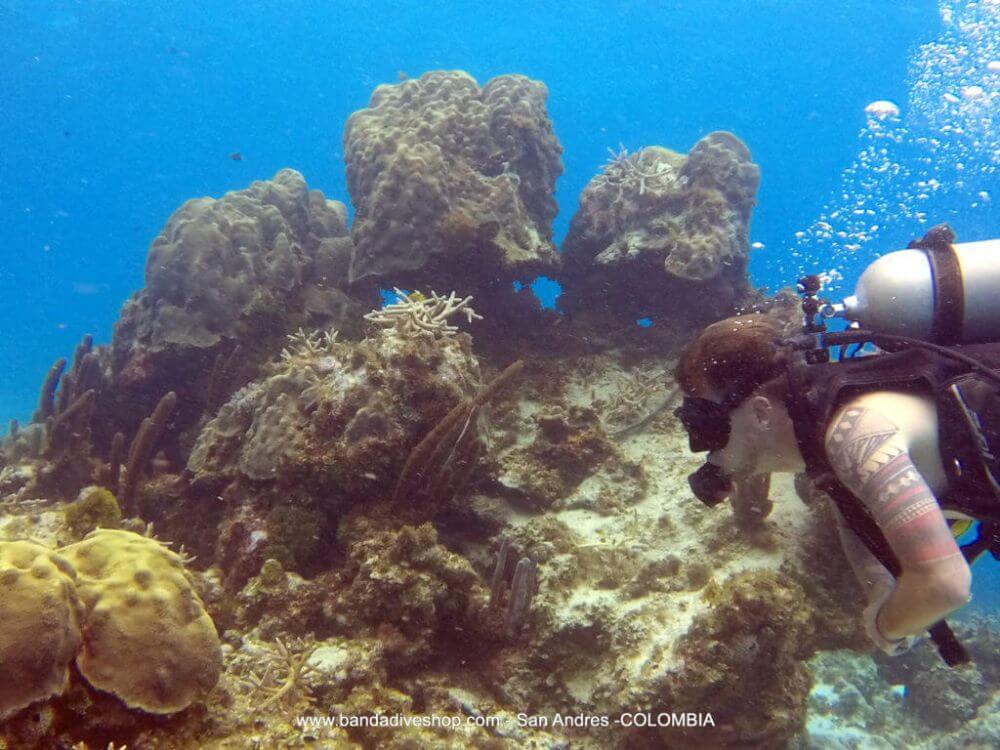
Thanks, I’m sure, to the special protection granted to the water’s surrounding this island, the coral reef was in superb condition.
The current was practically non – existent and as a result of this the coral structures around San Andres have been able to grow very tall, much more so than reef in more choppy conditions.
It also meant that most dive sites were totally beginner friendly, especially as they were generally not much deeper than around 40 ft!
There were countless reef fish to observe, and I also saw octopus, lobsters and a couple of very large flying fish resting on the sea floor.
A real highlight of the dives was spotting a truly collosal – but very friendly and photogenic stingray.
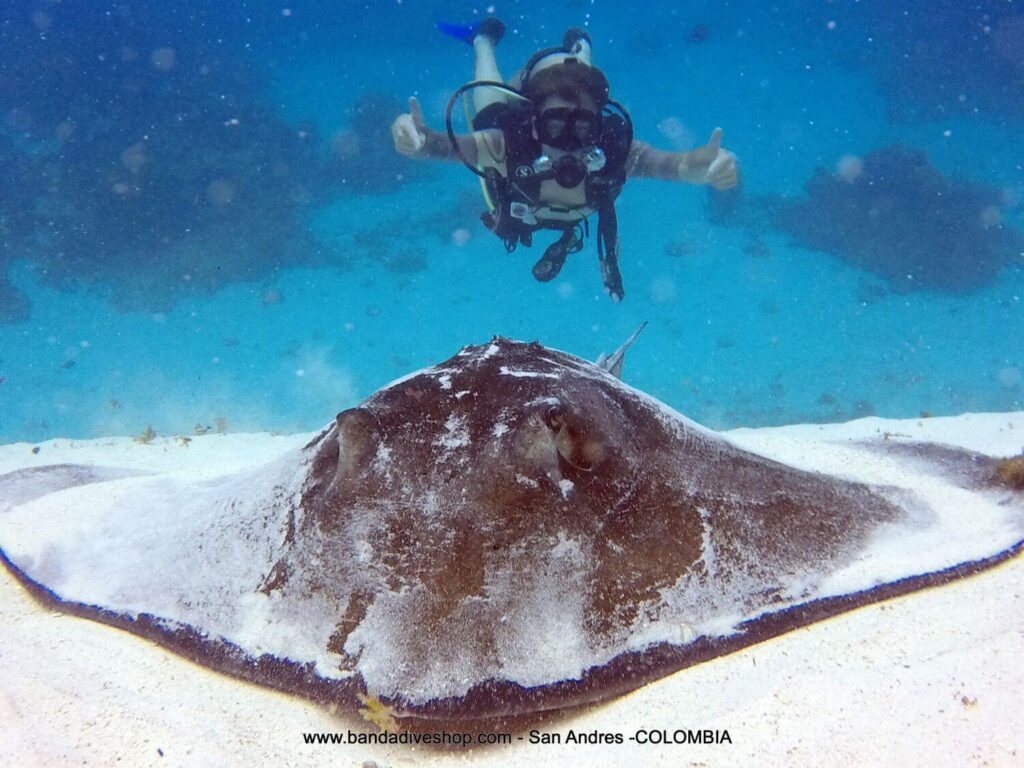
Which Dive Centre to go with in San Andres?
After investigating half a dozen dive shops at San Andres, I chose Banda Dive Shop because of their competitive prices, multi-linguistic staff and the genuine, friendly vibes I got as soon as walking into their shop.
It turned out to be a great choice! Everything from booking my dives, getting kitted up on the day and larking around with my GoPro savvy dive guide was smooth, helpful and fun!
There’s been times where I’ve gone to dive centres that seem to have had all the joy sucked out of them but this was not the case for Banda Dive School!
I would definitely recommend choosing them over the other dive centres in San Andres.
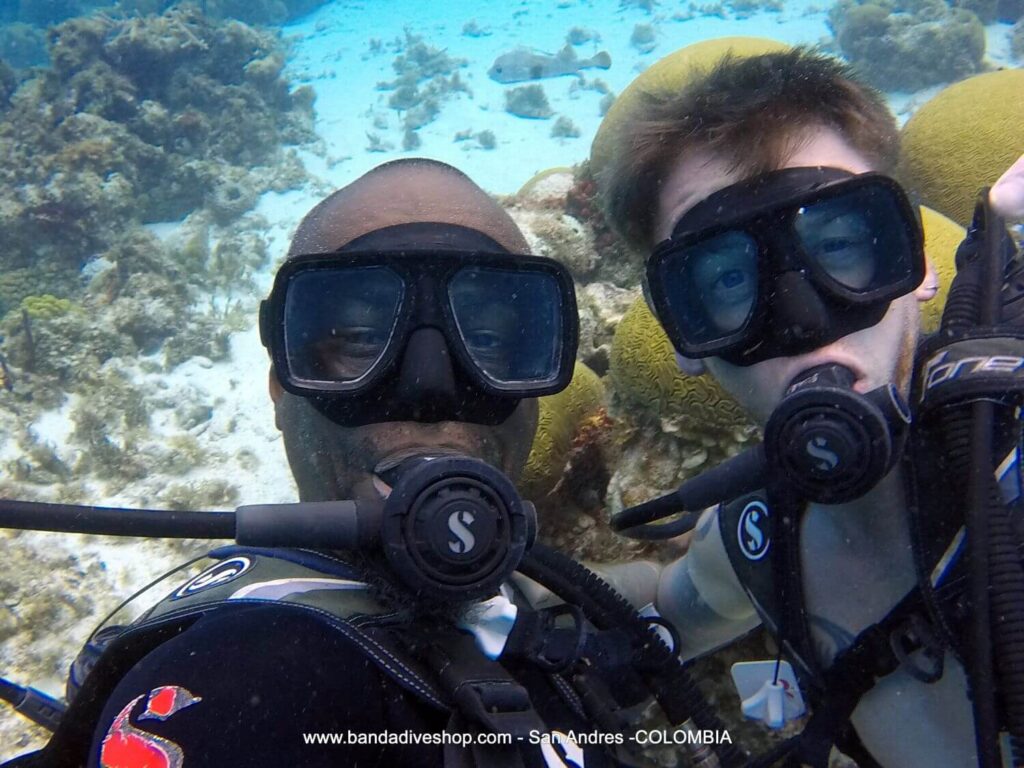
Click to check out Banda Dive Shop!
San Andres TRAVEL INFO
Where to Stay
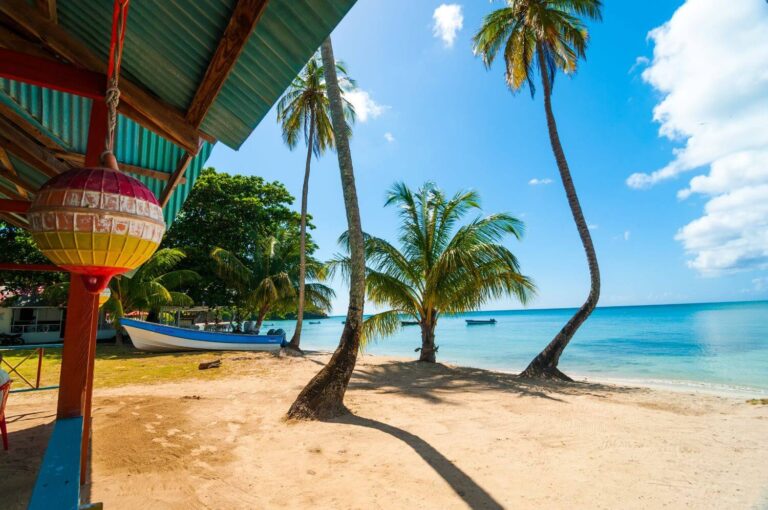
There’s a number of resorts and hostels on San Andres, but due to the islands remoteness and it’s reputation as a prime holiday destination for Colombians, prices are pretty high.
Generally speaking, you can expect to pay around $20 for a backpacker hostel dorm room or $50 for a double room – and from here the costs only goes up.
Another option you have with San Andres is to stay in an airbnb – if you look around you can actually find some very good deals for studio apartment airbnbs on the beach.
Just take heed that most of the restaurants and bars as well as all of the dive shops are on the north end of the island, whereas a good deal of the airbnbs are on the southern end, which is about a 20 minute drive away.
For more info, take a look at this guide to the 11 best San Andres Hotels!

When to Go
Good news! You can dive San Andres all year round. That said, the dry season is between December – March and July – August, when water visibility is at it’s greatest. During the other months of the year it’s rainy season meaning you can expect 1 – 2 hours of heavy rainfall on most days.
How to Get There
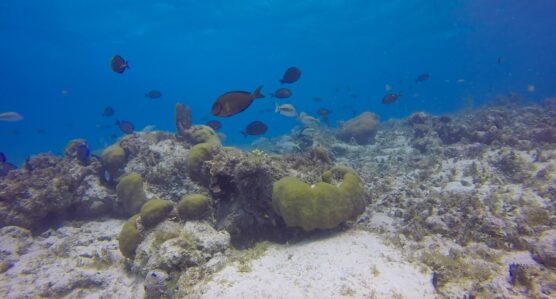
You can fly to San Andres from just about every major Colombian city, although this is the only way to get there.
From Medellin, flight time is 1 hour, 48 minutes whereas from Bogota it is 2 hours and 20 minutes and from Cartagena it is just 1 hour and 29 minutes. And that’s all there is to it!
Other Things to Do
At the northern end, San Andres is quite heavily developed with plazas, restaurants and shopping malls that are most frequented by Colombian tourists.
The southern end is much quieter with several protected marshlands, mangrove forests and home to most of the locals.
Along the 30km road that encircles the island, there are many scenic beaches and cays. In my opinion, the best way to discover the island is to rent a scooter and ride around this entire loop! Without stopping, it will take an hour or so, although there are quiet a few viewpoints and beaches you can check out, to make the trip last longer.
My favourite place to stop was the museum “Morgan’s Cave” where you can learn about the notorious pirate Captain Morgan, who used the island to hide treasure and breed an army of sons from his dozens of wives, before he met a watery grave, drowning on his own ship when it suck one fateful night.
San Andres Diving Squad DEBRIEFING:
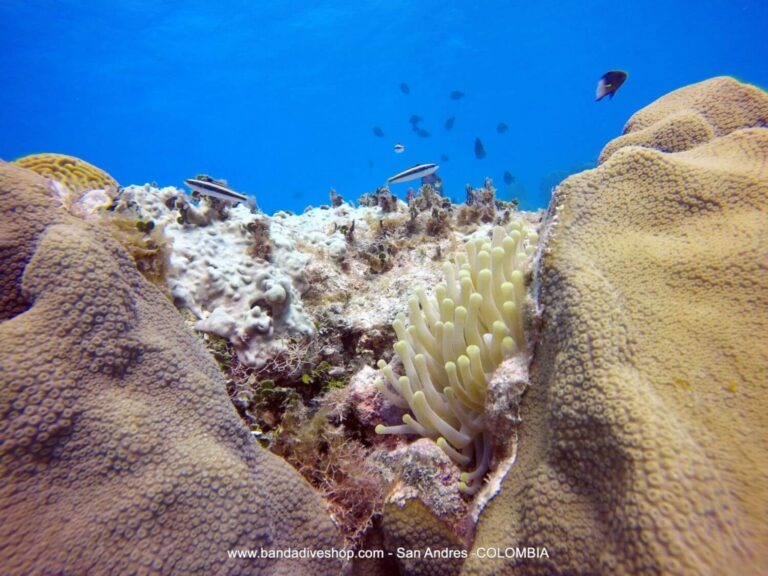
And there you have it! A brief description of my short yet awesome diving expedition in San Andres.
If you’re looking to dive somewhere a little off the radar with superb visibility, great coral reef and quirky critters, somewhere that’s easy to get to from Colombia and with a prime holiday island kind of vibe, San Andres could be the place for.
